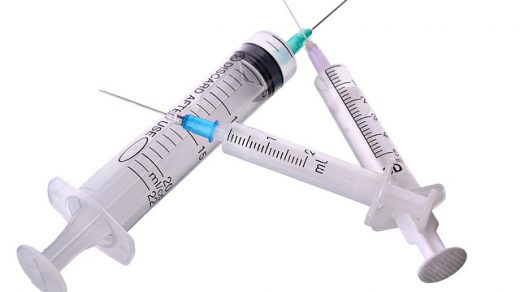
Fun and durable, the FluidStance balance board deck can be found at many offices these days as working professionals with desk jobs look for ways to stay active and healthy. Long hours slumped over at a desk means that your muscles remain inactive for long periods of time – a running hypothesis is that long periods of inactivity lead to issues with glucose regulation, as muscles cease their regular glucose uptake and the body adapts to a sedentary lifestyle.
FluidStance’s balance board, Level, provides an engaging alternative to this by forcing your body to engage different muscles to balance. Yet, it’s not so challenging of a position that it is overly taxing, but may require some time to acclimate to longer standing times. Research shows that the Level balance board increases energy expenditure by 19.2% as compared to sitting, which is well over the 10% threshold that qualifies a product for NEAT certification (NEAT stands for the science of Non Exercise Activity Thermogenesis, developed by Mayo Clinic). On average, there was also a 15% increase in heart rate while using the FluidStance deck versus the same sitting population.
Designed thoughtfully, such that the product doesn’t make you struggle to balance to stay upright, the average range of motion of 24 degrees promotes subtle movements that limit dorsiflexion (toes above heels) and plantarflexion (toes below heels) to angles that are comparable to walking. You may even find yourself standing for longer than anticipated with this product.
There are multiple models: The Original, Level, Plane Cloud, and Grade for Kids. The design and construction of the product is sleek and solid. The Plane Cloud offers soft foam on the top deck for those looking for a little extra anti-fatigue while standing. (FluidStance actually has an anti-fatigue mat made of flexible wood as well).
While the price point may be a bit high for some, the craft, construction, and benefits may just justify the cost.
We had the pleasure of speaking with founder, Joel Heath to learn more.
Alice Ferng, Medgadget: Please tell our Medgadget audience a bit more about yourself and your background. What inspired you to create this product, and to continue iterating on it? Was this something you had done before?

Mr. Joel Heath (Founder & CEO of FluidStance): The first company I founded was based in Vail, Colorado where we created the largest outdoor adventure event in the world, the [GoPro] Mountain Games. I had a fairly active life working in the mountains and it was common for our staff meetings to be on a chairlift or on a trail. We worked hard and played hard. After selling the company in 2008, I got into footwear and later became President of Teva Footwear. My corporate gig put me in a chair, airplane seat or at a desk for inordinate amount of time. Simply put, I lost my mojo. I built a standup desk to try to get off my butt, but I found that I just moved my pain point from my backside to my knees and hips. I started to play with ideas on how you could create enough movement to matter, but not too much to distract my work. 27 different prototypes later tinkering in my garage workshop, the Level® was born. I worked with footwear designers, engineers and footwear labs to find the sweet spot for optimal movement at your desk.
The Level increases energy expenditure by 19.2% compared to sitting—well over the 10% threshold that qualifies a product for NEAT(™) certification (NEAT(™) stands for the science of Non Exercise Activity Thermogenesis, developed by Mayo Clinic). When using your Level, you’re actively burning calories by allowing for more movement throughout the day.
Medgadget: What’s been some of the most unexpected challenges you’ve encountered in making this product?
Mr. Heath: After making shoes in China, I wanted to walk a factory line and tuck my kids into bed, so I set off to make FluidStance products in the United States. I was surprised how little infrastructure was here compared to what I was familiar overseas. My Dad had a small machine parts business in the 90s, but so much of that industry moved overseas. It took a ton of searching to find someone that would be willing to help an unknown startup make something unconventional. Perseverance paid off and the first products started to ship twelve months after the final prototype was tested and approved by the Lab.
Medgadget: What sorts of improvements are you making over time to the product? What sort of thinking goes into the angles, curvatures, and general design?
Mr. Heath: A big part of what we wanted to make sure our standing desk balance board products delivered was not to over burden the calf and achilles with too much surface variability. We found the sweet spot and madre sure the curvature and lift of each of our models would provide the same “ride.” On average our users spend 3+ hours a workday on our product.
We have always been committed to making our products over-engineered, so they can outlast your “career” and be passed down to the next generation. On top of that, we try to source as close to home, with as little plastic as possible and when we do use plastic it is predominately of recycled materials. For example our Plane® Balance Board is made of recycled tires and post-industrial waste.

Medgadget: You now have multiple variations of the FluidStance board – what sorts of customer feedback and user needs motivate you to create each variation? What sorts of feedback is useful?
Mr. Heath: We originally launched with the Level® which is made of military-grade aluminum and multi-ply bamboo with a water based finish and zero emitting VOC finish. We built it as a “forever product,” but we heard that segment of the market also wanted an entry level product. That is when we brought the Plane® into the mix. It was a challenge to build a product that upheld the FluidStance way, but our team used some non-traditional techniques to use high-density recycled content to get us the performance we wanted.
We are big believers in “active standing” versus “passive standing” that is done on an anti-fatigue mat. From my days in footwear, I know that cushioning might feel good when you initially stand on it, but you actually fake your body into standing “harder.” Your body is meant to move, not sit into a surface. As much as I tried to convince everyone, some people wanted our balance boards with softer surfaces too, so the UpMat and Cloud was created as a partner to our balance boards.
Medgadget: Have you used technology to look at a person’s skeletal alignment as they are standing on the balance board? It’s definitely easy to feel the body adjusting to the stimulus and has made it easier to stand for longer periods of time with shifting weight – have you done a deeper study on the postural ergonomics or general health benefits?
Mr. Heath: We have not looked at skeletal alignment in a lab, just through the ten years of being on the market and the anecdotal feedback we get. That is something I would love to do, so we can back up what so many customers tell us by improved balance. Throughout the years, we did do a ton of motion capture sensor and pressure plate research in our lab. The sensors tracked movement while people worked to measure their dorsiflexion and plantar-flexion. We supplemented that research with CO2 analysis while working with Westmont College. The Mayo Clinic and the University of Idaho have also done numerous tests with our product. A synopsis of that research can be found in these white papers.
Medgadget: What’s next? Any exciting new plans? Or anything else you want to share with our readership?
Mr. Heath: Our next new product looks at mental flow and helping people with focus at their desk. The product is very simple, yet beautiful and follows much of the new research around that mental focus follows visual focus. The “108 Focal Timer” should hit the market in December.

Link: FluidStance homepage…


